Understanding the Financial Impact of Hydrofoils in Kiteboarding
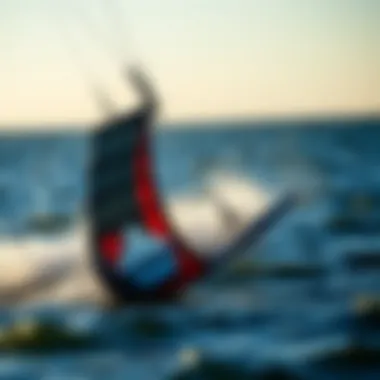
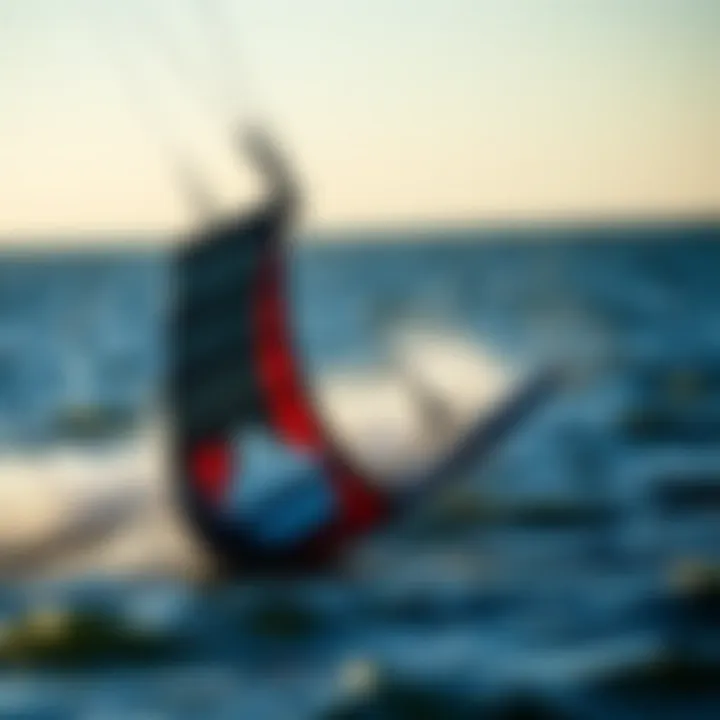
Intro
In the captivating realm of kiteboarding, hydrofoils have stirred quite the excitement among enthusiasts and newcomers alike. These devices, which lift the board above the water's surface, offer an exhilarating ride that minimizes drag and maximizes speed. However, getting into hydrofoil kiteboarding isn't just about the thrill; it also involves a financial commitment that can vary significantly based on several factors.
Understanding the costs associated with hydrofoils is crucial. Not only do potential buyers need to grasp the initial purchase prices, but they should also consider maintenance, potential upgrades, and even the overall value they bring to the kiteboarding experience. With many brands and models on the market, each offering unique features and benefits, navigating this financial landscape can be akin to finding a needle in a haystack.
In this article, we aim to break down what it costs to dive into the world of hydrofoils in kiteboarding. From essential gear to maintenance expectations, we will provide you insights that help make informed decisions, ensuring you find the perfect balance between performance and budget.
Understanding Hydrofoils
The world of kiteboarding has evolved dramatically, and hydrofoils are now at the forefront of this transformation. Understanding hydrofoils isn't just a technical detail; it's essential for anyone looking to elevate their kiteboarding experience. These devices can change how riders engage with the water, making it smoother and allowing them to catch air with greater ease. Grasping the nuances of hydrofoils provides kiteboarders with insight into performance, safety, and overall enjoyment.
When we break down the hydrofoil itself, we're not just looking at a piece of equipment. We're diving into the mechanics, principles of lift and drag, and stability that combine to create a unique riding experience. Every aspect plays a significant role in how effectively a hydrofoil can transform a traditional kiteboarding session into something extraordinary.
What is a Hydrofoil?
A hydrofoil is a specialized structure connected to the board, often resembling a wing. As kiteboarders ride, the hydrofoil works beneath the surface of the water to generate lift. This lift occurs when water flows over the wings of the hydrofoil, allowing the boarder to rise above the water's surface. The result? A sensation akin to flying, with less drag and more efficient speed.
Hydrofoils can vary widely in design and materials. Some are ideal for speed enthusiasts, while others cater to those who appreciate a more leisurely ride. Regardless of your style, knowing what a hydrofoil offers is crucial for any kiteboarder.
The Mechanics of Hydrofoils
Understanding the mechanics of hydrofoils opens the door to intelligent selection and usage. As kiteboarding evolves, the intricacies of hydrofoil dynamics become key knowledge for enthusiasts. Here’s a closer look at three main aspects of hydrofoil mechanics: Lift and Drag, Stability in Water, and Acceleration Dynamics.
Lift and Drag
Lift and drag are the twin forces that govern the performance of hydrofoils. Lift refers to the force that raises the board above water, whereas drag is the resistance experienced due to water flow.
The balance between these two forces is crucial. Too much drag can slow a rider down, while sufficient lift allows them to glide smoothly just above the surface. One characteristic of effective hydrofoil design is its ability to generate significant lift with minimal drag. This efficiency is often why kiteboarders choose hydrofoils over traditional boards.
A unique feature is the angle of attack, the angle at which the hydrofoil meets the water. Adjusting this angle can directly influence both lift and drag, providing riders with the ability to customize their experience based on conditions.
Stability in Water
When kiteboarding, stability is paramount. Hydrofoils can help riders maintain balance and control, particularly in turbulent conditions. Stability derives from the hydrodynamics of the foil and is greatly influenced by its shape and size.
Good stability means less chance of falling and more opportunities for maneuvers. Many riders favor hydrofoils due to their performance in choppy waters; the foil design minimizes sudden shifts and allows for smooth transitions. However, a larger foil can sometimes lead to a slower response, which is a trade-off riders need to consider.
Acceleration Dynamics
Acceleration dynamics focus on how fast a rider can reach speeds once airborne. Efficient acceleration is vital for making the most out of gusty winds or when learning new tricks. A hydrofoil with a well-designed wing shape aids in achieving a swift lift-off and quick speeds.
A key characteristic here is the responsiveness of the foil to rider inputs. Some foils allow for rapid acceleration, while others may lag, impacting the choice for those looking to enhance their performance. The design intricacies and materials used can significantly influence these dynamics.
In summation, understanding hydrofoils is not just an academic exercise; it’s a practical necessity for kiteboarders who wish to push boundaries. By delving into what comprises a hydrofoil and its mechanical functions, kiteboarders can better equip themselves for an impactful experience on the water.
The Cost Breakdown of Hydrofoils
Understanding the costs involved with hydrofoils is vital for any kiteboarding enthusiast. Buying a hydrofoil can involve a substantial financial outlay, and grasping the different aspects of these costs provides insight into what is being purchased. It also helps kiteboarders make informed decisions regarding their investments. In the end, knowing how to break down those expenses assists in balancing performance needs against budget constraints.
Initial Purchase Price
Budget Options
When it comes to budget options, affordability sits at the forefront. These hydrofoils often attract newcomers who are eager to get into the sport without sinking their budget. What makes budget models appealing is their basic yet functional design. They usually include a simple setup that allows riders to gain the fundamental experiences of hydrofoiling without unnecessary frills.
However, budget options may compromise on some performance aspects. For example, while they offer decent stability, they might not provide the speed or maneuverability of pricier models. Yet, for those just beginning, they can serve as a solid entry point into the world of kiteboarding. Plus, you can always upgrade as your skills progress.
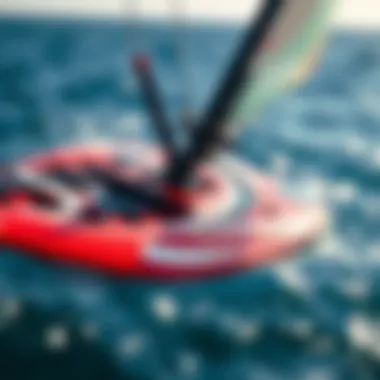
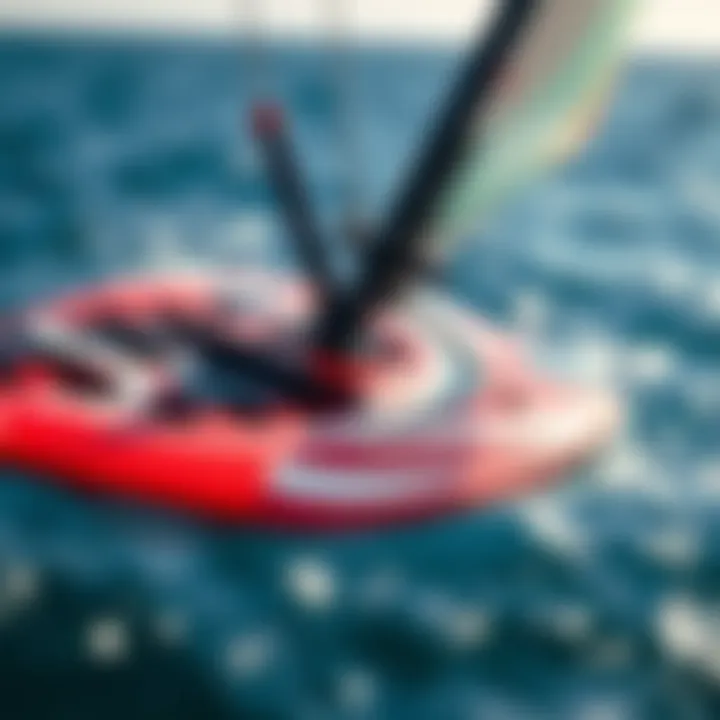
Mid-Range Choices
Mid-range choices carve a niche for those who are serious about their trade but aren’t ready to break the bank. These models typically offer a more refined experience, boasting better materials that ensure durability and efficiency. Hydrophlates in this category often have enhanced aerodynamics, which can lead to notable speed improvements.
One of the appealing traits of mid-range choices is their balance of quality and price. While they require a slightly higher investment than budget models, they often yield a better value in performance and longevity. This makes them an attractive option for intermediates willing to invest more for a performance boost.
Premium Models
Premium models stand at the higher end of the spectrum, showcasing the latest technologies and materials. They are engineered for performance with precision craftsmanship. Enthusiasts looking for superior speed, maneuverability, and advanced features generally find these models appealing. The investment is significant, but the payoff comes in the sheer performance on the water.
In this class, even subtle enhancements like wing design and weight distribution can make a difference. For example, a premium hydrofoil might utilize carbon fiber construction, providing a lightweight yet sturdy option. While they are a popular choice among competitive riders and serious hobbyists, the initial cost can be quite steep for newcomers.
Accessories and Add-ons
Masts
Masts are the backbone of a hydrofoil setup, connecting the board to the hydrofoil itself. They come in various lengths and materials, each influencing performance and feel on the water. A longer mast can offer improved performance by allowing for better clearance, especially in choppy waters. This feature can be pivotal for riders looking to progress in their skills.
Investing in a quality mast is often considered essential. However, one might find that more expensive masts can provide marginal returns on performance versus their mid-range or budget counterparts. It’s a trade-off that needs careful consideration.
Wings
Wings play a crucial role in determining how a hydrofoil handles in the air and water. They vary significantly in shape and size, with each offering different flying characteristics. Choosing the right wing is paramount because it greatly affects lift and drag.
Some wings are designed for speed, while others focus on stability. This can heavily influence a rider's experience. Selecting a wing that aligns with your riding style can enhance your overall performance, making wings a key player in the accessory game.
Footstraps
Footstraps are often overlooked, but they are essential for security and comfort during sessions. Select footstraps wisely to ensure a snug fit and the right amount of give. As a rule of thumb, comfortable footstraps can enhance control and stability on the board, letting the rider focus on their technique instead of worrying about security.
Like other components, footstraps vary widely in price and quality. Spending a bit more on higher-end models can offer better materials and a design that's customized for performance. However, some budget options can work well without causing any headaches.
Understanding these elements not only informs buying decisions but also sheds light on the essential costs of maintaining gear throughout a kiteboarder's journey.
Maintenance Costs
Understanding the maintenance costs of hydrofoils in kiteboarding is vital for any rider who wants to keep their gear in tip-top shape without breaking the bank. These costs aren't just a minor detail; they can significantly influence the total investment that a kiter must consider. Moreover, knowing the upkeep attached to these innovative devices leads to better long-term decisions and peace of mind while riding.
Regular Upkeep Needs
Maintaining hydrofoils involves a few key procedures. It's not just about keeping them clean; it's also about storing them correctly, handling them with care, and knowing when something needs a professional touch.
Cleaning Techniques
Cleaning techniques are paramount for preserving the lifespan of hydrofoils. Saltwater, sand, and debris can cause damage if left unchecked. Simple practices like rinsing your gear with fresh water post-session can dramatically reduce corrosion and wear. The key characteristics of effective cleaning include ease and thoroughness. Riders often prefer using non-abrasive cloths or brushes to avoid scratching the surface of the wings.
The unique feature of these cleaning methods lies in their effectiveness at preventing long-term impacts that gunk and grime can have on performance. The major advantage? A clean hydrofoil glides better and responds quicker, augmenting the overall experience on the water. On the flip side, if neglected, minor issues can balloon into costly repairs.
Storage Recommendations
Proper storage is another cornerstone of maintenance. Hydrofoils should be stored in a dry, cool area, away from direct sunlight to prevent material degradation. The idea is not only to protect them from physical damage but also to mitigate environmental effects. A popular choice for storage solutions includes padded bags that safeguard against dings and scratches.
This aspect is essential because, over time, improper storage can lead to surprisingly costly repairs or replacements. A notable advantage of using these bags is that they make transport easier as well—no more worrying about accidental knocks. However, some might find they need to invest a bit upfront for a quality bag. But like they say, "a penny saved is a penny earned"—or in this case, a well-served foil saves heaps of trouble later.
Insurance and Repair
Navigating the waters of hydrofoil insurance and repair can be tricky but provides crucial coverage. Accidents can happen, and understanding how to mitigate those financial risks is important for any serious kiteboarder.


Finding a Repair Service
Finding a repair service tailored to hydrofoils is an essential aspect of being a conscientious kiter. Specialized services that understand complex components can make all the difference. A well-chosen service not only saves time but can also ensure high-quality repairs that keep your equipment feeling new.
The unique selling point of utilizing such services is the skill level of the technicians. They know the ins and outs of various brands and can often provide faster service along with warranties on their work. While finding the right fit, local kiting communities or online forums can be great resources for recommendations. The downside here? Some repair shops may charge a premium for their expertise, so it's wise to assess both reputation and price before diving in.
Cost of Repairs
The cost of repairs for hydrofoils can vary widely based on the extent of the damage and parts needed. Labor costs also play a big role. An elementary fix might only set a rider back a few bucks, while more significant issues could escalate into the price range of several hundred dollars. The broad range makes budgeting for potential repairs essential.
However, a standout feature in this aspect is that many manufacturers offer warranties that cover defects or failures not caused by user error. This can mitigate some costs, acting as a safety net for buyers, especially those investing in higher-end models. On the downside, if a warranty doesn’t apply, kitesurfers may find themselves footing the entire repair bill, which can create quite the dent in one's finances.
End
In summary, maintaining hydrofoils requires deliberate effort through diligent cleaning, proper storage, and knowing how to address repairs efficiently. Though it may seem like a hassle, these maintenance costs and practices ensure a smoother sailing experience on the water, ultimately amplifying the joy of kiteboarding. So, it's clear that a little foresight in upkeep can lead to a wealth of benefits, both in performance and cost-saving.
Comparing Hydrofoil Brands
When it comes to investing in a hydrofoil, not all are created equal. Understanding which brands stand out can make a world of difference in your kiteboarding experience. This section dives into the nuances of comparing hydrofoil brands, allowing you to weigh options based on your needs, performance expectations, and budget considerations.
Well-Known Manufacturers
Brand Analysis
The landscape of hydrofoil manufacturers is dotted with a few giants who've earned their reputation. These brands often focus on quality, innovation, and rider feedback to shape their products. Companies like Slingshot and Naish have well-established histories, backed by years of development. They tend to offer a wide array of options tailored to different skill levels and riding styles.
What sets these brands apart is their consistent dedication to performance. For instance, Slingshot's hydrofoils are known for their stability and speed, making them particularly attractive to those looking to push their limits. On the downside, the cost associated with these well-known brands can sometimes be a hurdle for novice riders. But the investment often pays off in reliability and resale value.
Price Comparisons
When exploring prices, it becomes clear how the stature of a manufacturer can influence cost. Established brands like Lift Foils may command higher prices, but they often come with a level of assurance regarding material quality and design. Comparing these prices with lesser-known brands can reveal surprising differences.
Typically, you might find that premium models feature advanced materials and technology that increase durability and performance. In contrast, more budget-friendly brands may use alternative materials that compromise on longevity and speed. This trade-off can be significant when deciding what to prioritze in a hydrofoil purchase.
Emerging Brands
Value Proposition
Emerging brands can offer a unique value proposition, especially for budget-conscious kiteboarders. Brands like Banga have entered the market with promising features that compete with long-established names. These companies often lean on innovative designs and materials, hoping to grab the attention of both novice and experienced riders. They frequently provide cost-effective alternatives without completely sacrificing quality.
A distinctive feature of emerging brands is their flexible pricing strategy, often allowing for customization that caters to individual rider preferences. While this flexibility can be advantageous, the concern is typically around the brand's reputation and after-sales service, which may not be as robust as their more established competitors.
User Reviews
User reviews play a critical role in assessing new or emerging brands. In many cases, avid kiteboarders turn to forums and social media to share their experiences. Insights from fellow riders can highlight strengths or weaknesses that might not be evident in product descriptions.
For example, forums on Reddit can reveal common issues faced by users or praise for certain models, providing first-hand accounts that are invaluable. These reviews can tip the scales when deciding whether to go with a trusted name or take a chance on a newer option. However, biases and discrepancies in personal experience can present challenges when making a choice based purely on user feedback.
Analyzing the Value of Hydrofoils
When discussing hydrofoils in kiteboarding, the conversation inherently turns to their value. It’s not merely about sticker prices or the latest trends, but rather the tangible benefits and long-term implications of investing in this technology. For kiteboarders, the right hydrofoil can mean the difference between an exhilarating ride on the water and a frustrating day spent battling against the elements. Thus, understanding the value becomes indispensable.
Performance Benefits
Speed Enhancements
One of the most notable advantages of hydrofoils is their ability to enhance speed. Hydrofoils, by design, lift the board above the water surface, reducing drag significantly. This not only allows kiteboarders to achieve higher speeds but to do so with less effort. As a result, riders can cover more distance and enjoy the thrill of flying across the water with little resistance. The increased speed provides a sense of freedom, appealing to those who crave fast-paced adventures.
But here’s the kicker: while speed is enticing, it comes with a learning curve. New riders might find that adjusting to the dynamics of a hydrofoil takes time and practice. Hydrofoils are not just about strapping on and zooming off; mastering the balance and control required can be intricate. However, once the learning phase is surpassed, the rewards in terms of speed and performance become apparent.
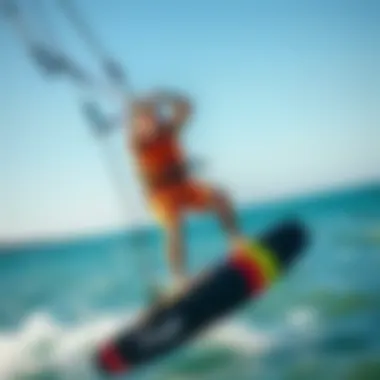
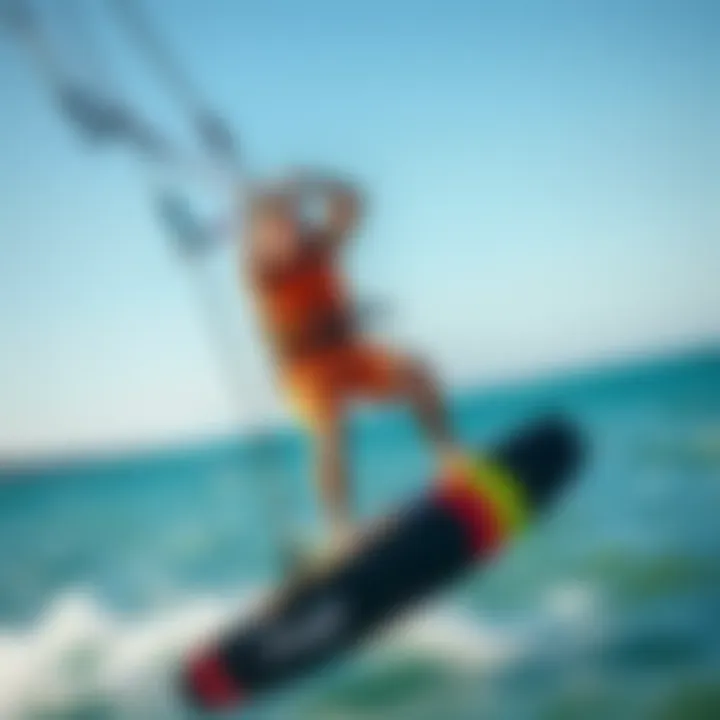
Reduced Wind Requirements
Another compelling aspect of hydrofoils is their capability to operate efficiently in lighter winds. Unlike traditional kiteboarding, where a certain wind threshold is crucial, hydrofoils allow riders to get out on the water even when the breeze is barely whispering. This feature widens the window for kiteboarding, making it accessible even when conditions are not perfect.
The unique design of hydrofoils means they can generate lift with surprisingly minimal wind force, making them a popular choice among riders living in areas with variable wind conditions. Of course, this does not mean that heavier winds should be disregarded. In fact, hydrofoils thrive under strong winds, too, often providing exhilarating days on the water when others are stuck on shore. However, one must remain cautious; too much wind can result in unwanted instability and difficulty controlling the board.
Long-Term Investment
Resale Value
When considering the purchase of hydrofoils, the potential resale value is a significant factor. Quality hydrofoils maintain their worth well due to their specialized nature and the growing interest in the sport. It’s not uncommon to see second-hand hydrofoils retaining a high percentage of their initial cost. This aspect makes them not only a fun purchase but a smart investment.
Yet, it’s important to consider the market; specific brands and models tend to perform better in resale situations. Thus, a careful selection process—including researching current popular brands and user reviews—can significantly impact future resale scenarios. By choosing wisely, riders can ensure that when it’s time to upgrade, they’re not left holding an item that has depreciated dramatically.
Cost Per Use
Finally, analyzing the cost per use also sheds light on the true value of hydrofoils. When you break down the overall investment by the number of rides enjoyed, hydrofoils start to showcase their cost-effectiveness. Each outing can yield tremendous excitement, especially for avid kiteboarders.
This perspective emphasizes the importance of usage frequency. For those who kiteboard regularly, a hydrofoil may quickly become a favorite piece of gear. However, for those who hit the water infrequently, the initial cost might feel weighty without that consistent value. Understanding one’s own kiteboarding habits is essential in determining whether a hydrofoil is the right fit for one’s needs.
In summary, while the initial costs for hydrofoils can be intimidating, a close examination reveals potential advantages and long-term savings. Enhanced performance, resale value, and the joy derived from riding are core elements to consider. Investing in a hydrofoil, when matched to one’s kiteboarding passion and activity level, can bring exhilarating experiences and lasting satisfaction.
Market Trends in Hydrofoil Costs
Understanding the current market trends in hydrofoil costs gives kiteboarders the upper hand in making strategic purchasing decisions. As the sport evolves, the dynamics of the hydrofoil market change, influenced by a variety of factors like consumer preferences and advancements in technology. These trends not only reflect shifts in what riders are looking for but also impact pricing and availability, making it essential to stay informed.
Shifts in Consumer Preferences
Rise of Eco-Friendly Options
The kiteboarding landscape is witnessing a significant preference for eco-friendly products, including hydrofoils. This shift isn't merely a fad; it speaks to a growing environmental awareness among consumers. Riders are now considering not just the performance of their gear but also its ecological footprint.
One notable characteristic of eco-friendly hydrofoils is their use of sustainable materials. Manufacturers have started to implement biodegradable resins and recycled fibers, which results in less waste during production. This development positions eco-friendly options as not only a responsible choice but also a sustainable one.
However, the transition to eco-friendly choices doesn’t come without challenges. Often, these products can carry a premium price tag, which may deter some buyers. Still, for environmentally conscious consumers, the long-term benefits and the alignment with their values generally outweigh initial costs.
Technological Advancements
Another vital aspect influencing market trends is the rapid pace of technological advancements in hydrofoil design and manufacturing. Innovations like lightweight materials, improved hydrodynamics, and enhanced stability features play a crucial role in attracting consumers. Riders naturally gravitate toward the latest tech that promises better performance on the water.
A focal point of these advancements is in airfoil shape and construction. New designs significantly reduce drag and improve lift, allowing for exhilarating speeds with minimal effort. Riders appreciate how these enhancements can lead to a more thrilling and efficient experience on the water.
While such innovation brings clear benefits, there's often a corresponding rise in cost. High-tech models can stretch budgets, prompting some enthusiasts to balance their desire for advanced technology with their financial limitations.
Seasonal Pricing Variations
Off-Season Deals
Timing is everything when it comes to purchasing hydrofoils, and off-season deals are a strategy savvy kiteboarders can use. Retailers often need to clear inventory during periods of low demand, leading to discounts that can be quite alluring. This variety of price reductions can help consumers snag a hydrofoil for a fraction of its original cost.
Off-season deals not only facilitate access to otherwise expensive equipment but may also introduce buyers to new brands that might not have been on their radar. However, potential downsides include limited selection and the risk of purchasing last season's models, which might not feature the latest technological innovations.
End-of-Season Discounts
Similarly, end-of-season discounts present another way for kiteboarders to save. As retailers prepare for next year's inventory, they frequently lower prices on existing models. This trend allows consumers to capitalize on deals while still enjoying essential features.
It's important to remain discerning, though. While end-of-season discounts can yield high-quality hydrofoils at reduced prices, there may be a temptation to buy without thorough consideration. Riders should ensure that they are still making a wise investment and not just chasing after a lower price.
Epilogue
The journey through the intricate costs of hydrofoils in kiteboarding reveals a nuanced understanding pivotal for anyone considering diving into this thrilling sport. Weighing costs and benefits properly is not just about dollar signs; it’s about evaluating the full spectrum of experience and performance enhancement that hydrofoils offer. Investing in a hydrofoil is not a mere purchase, it’s a commitment to elevating one’s kiteboarding experience.
Hydrofoils provide significant advantages that can change the game for kiteboarders. From improved speeds to the magic of riding over less wind, the benefits often outweigh initial expenses. However, it’s essential to ponder the longevity of your investment. If you go for a top-of-the-line model, ensure it meets your needs for years to come rather than becoming obsolete as new technology emerges.
Considerations to Keep in Mind
- Personal Skill Level: Understanding your proficiency in kiteboarding can influence the spending decisions you make. Beginners might want to stick to more budget-friendly options.
- Usage Frequency: The more you intend to use your hydrofoil, the more justified the higher price tag becomes. It could even lead to savings if you factor in the performance benefits.
- Potential Resale Value: Hydrofoils typically retain good resale value, particularly if you keep them in decent condition. This aspect can cushion the expense when the time comes to upgrade.
"Investing in a hydrofoil might feel like a leap of faith at first, but the returns in thrill and performance could alter your kiteboarding experience for the better."
Bringing all this together, kiteboarders need to align their budget with their aspirations for performance. By focusing on both costs and the wider benefits hydrofoils bring to the table, enthusiasts can make educated choices that enhance their outdoor adventures. Remember, the right hydrofoil isn’t just a piece of equipment; it’s the bridge to deeper enjoyment on the water.



